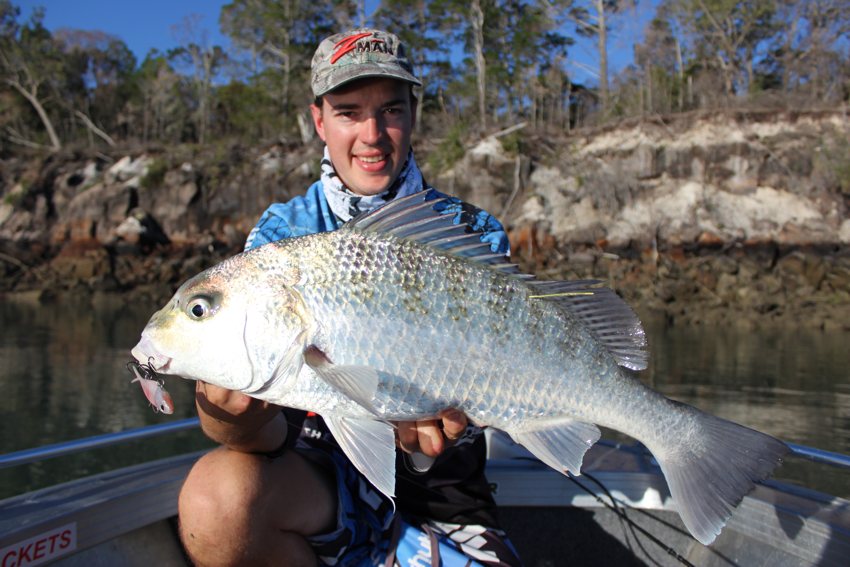TAGGING BASICS
Tagging and Releasing fish is not difficult but it’s important for the health of the fish that the fish are handled with care. The following short videos demonstrate the key aspects of tagging. If you follow these guides you will be on your way to successful Tag and Release.
Tagging Basics
Tagging Flathead
How to Record Your Catch
Measuring Fish
Recording Location
It’s important to submit your records as soon as possible after tagging fish. The following gives a quick guide on how to provide the data to Suntag.
Step 1 – Get The Infofish Trip Sheet
In 2006 Infofish introduced a standardised trip sheet that simplifies the process of recording data. As a result the data provided under suntag is of a standard that enables us to provide high quality feedback to fishers and even predict the future of fish stocks.
Download the Infofish Trip form (Excel)
- Fill out the form and save with a unique name
- When filled out, email the finished form to infofish australia
- Optionally there is an upload form accessible via Suntag Online
Step 2 – Need help filling out the forms?
The form has built in instructions and help on the additional sheets.
Where ever there is a red triangle in the upper-right corner, there is help for what data is required in a field. Hover over cells with the red triangles to view the additional help text.

Step 3 – What Data to Record
There are several sections to provide data on
- Base Data (always required)
- Injury Data (optional – record where injuries occur)
- Gear Data (optional but highly desired)
- Hooking Data (optional – used for specific projects, not critical)
Step 4 – Record Basic Data
Trip Information is at the top. At a minimum, please record:
- Trip Code (your initials and a sequential number for each trip recorded are sufficient
- Boat Ramp
- Number of Fishers
- Start Date
The key data to be recorded for a trip for each fish is:
- Tag Number (including any prefix letters)
- Person who caught the fish
- Species
- Date fish was caught
- Total & Fork Length (to the nearest 5mm)
- General description of location
- Map & Grid that the fish was caught in (Very Important)
- Release Condition (1-5)
- Fate (always TR for tagged fish)
- Fishing Method (Bait, Lure, Fly)
Step 5 – Injury Data (Optional)
If there are any injuries where possible record them so we can continually assess and improve our techniques.
- Swim Bladder Condition (N = no barotrauma, S = stomach hard, G = gut out, E = eyes bulging, SE = stomach hard and eyes bulging)
- Swim Bladder Treatment (N = no treatment, V = vented, AV = anal vented, S = shot line)
- Water Depth (Metres)
- Bleeding (N = no bleeding, L = light bleeding, B = heavy bleeding, T = bleeding from tag)
- Injury (N = no injury, E = eye, G = gill, J – jaw)

Step 6 – Gear Data (Optional but Highly Desired)
Gear data is increasingly important. Where possible record the tackle used.
- Lure Bait Size
- Lure Bait Description
- Line Type
- Line Strength

Step 7 – Hooking Data (Optional)
Hooking data has been used in the past to assess the impact of different hook types on survival rates. Much of this is now well understood so recording of this data is not compulsory.
- Hook Location
- Hook left in fish
- Hook type
- Hook size
- Hook Description
- Hook Barb
- Number of Hooks
Do you know why Flathead migrate hundreds of Kilometres to Fraser Island? We don’t either yet, but without tagging we wouldn’t even be able to ask the question. What if we change something on Frazer Island without knowing the answer to that question? Will it affect them?
It might sound counter intuitive but fish are better off with fishers. While there are some that believe that we should leave well alone the reality is the fish we target face a range of potential threats, not just overfishing. Without fishers providing intelligence many issues caused by environment change, development or harvesting practices go unnoticed until the only solution is drastic action.
Isn’t it better to fish guilt free knowing that the fish you value are in good shape?
Looking after the fish you target
Suntag is the only long term recreational fishing program in the country that has consistently helped improve the knowledge and handling of the species fishers target. With over 30 years of data collected on all the key species that rec fishers target this is the biggest recreational species knowledge base in the world. It’s so big that we are discovering new things about fish species all the time and we will be for years to come.
Looking for a challenge
Tagging offers endless challenges. There are species that we need in numbers, there are locations hardly fished we need to know about. There are tagging challenges and fishing competitions that are tagging only. There is even tagging effort that helps predict the future. Suntag fishers share their skills because they want others join in the task of helping the fish they target. No matter where you fish, Suntag can help you sharpen your skills the best way possible – by getting you out on the water and being successful.
Looking for recognition
Tagging offers a wide range of recognitions. For those that work hard on a single species there are Tagging Achievement Awards. For those that are good at catching the big ones there are Tagging Masters. For those that focus on social media, interesting stories make it onto our Suntag Facebook page and go out to tens of thousands of fishers each week. Our best tagger has tagged nearly 25,000 fish. Now isn’t there a tagging story you would like to tell?




